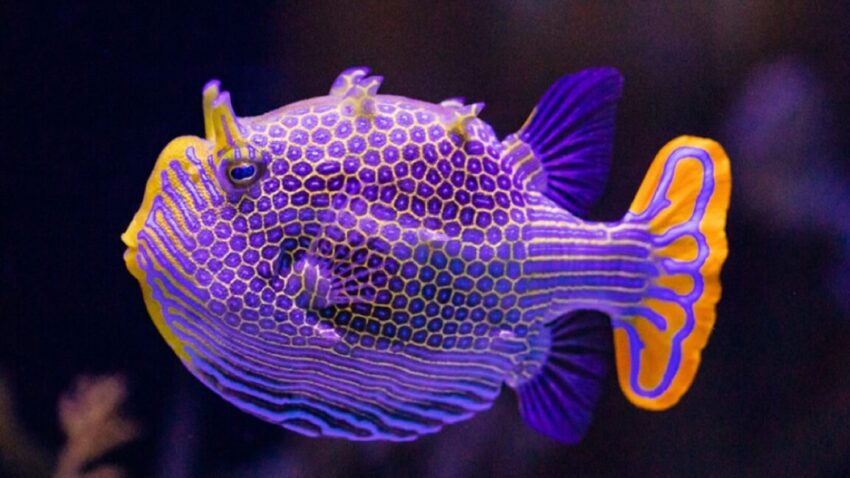
why imperfection could be key to turing Recent research suggests that introducing imperfections into a system may be crucial for understanding how Turing patterns form in nature.
why imperfection could be key to turing
Understanding Turing Patterns
Turing patterns, named after the renowned mathematician and computer scientist Alan Turing, are complex spatial arrangements observed in various biological systems. These patterns manifest in the natural world as the distinctive black-and-white stripes of a zebra or the unique spots of a leopard. Turing’s foundational work in 1952 proposed a theoretical framework for how such patterns might emerge through the interaction of chemical substances known as morphogens.
The Mechanism Behind Turing Patterns
In his seminal paper, Turing introduced a model involving two types of morphogens: an activator and an inhibitor. The activator promotes the expression of a particular trait, such as a stripe or spot, while the inhibitor serves to suppress this expression. Both chemicals diffuse through a medium, similar to how gas molecules disperse in a container. Turing’s model suggested that if the inhibitor diffuses at a faster rate than the activator, the system becomes destabilized, leading to the formation of distinct patterns rather than a uniform distribution.
To illustrate this concept, consider the analogy of injecting a drop of black ink into a beaker of water. Initially, the ink spreads, creating a gradient. However, if the ink represents the activator and the water represents the inhibitor, the final outcome may not be a uniform gray but rather a complex arrangement of spots or stripes, depending on the relative diffusion rates of the two substances.
Limitations of Turing’s Original Model
While Turing’s original proposal provided a foundational understanding of pattern formation, it proved to be overly simplistic when applied to real-world biological systems. Researchers have struggled to replicate the intricate patterns found in nature using Turing’s model alone. The challenge lies in the inherent complexities of biological systems, which often involve multiple interacting components and environmental factors that Turing’s model did not account for.
New Insights from Recent Research
In a groundbreaking study published in the journal Matter, scientists from the University of Colorado at Boulder (UCB) have introduced a novel modeling approach that addresses these limitations. By deliberately incorporating imperfections into their models, the researchers have achieved more accurate representations of natural patterns. This new perspective suggests that imperfections, rather than being mere noise, play a critical role in the emergence of Turing patterns.
The research team, led by Siamak Mirfendereski and Ankur Gupta, focused on a mixture of two types of pigment-producing cells. These cells undergo a process known as diffusiophoresis, which allows them to self-assemble into a hexagonal pattern. The introduction of controlled imperfections into the system enabled the researchers to observe how these irregularities influenced the final pattern formation.
The Role of Imperfections
The findings from UCB highlight the significance of imperfections in biological systems. The researchers discovered that when imperfections were introduced into the diffusion process, the resulting patterns were not only more complex but also more closely aligned with those observed in nature. This challenges the traditional view that uniformity and precision are essential for pattern formation.
Implications for Biological Research
The implications of this research extend beyond the realm of theoretical modeling. Understanding how imperfections contribute to pattern formation can provide valuable insights into various biological processes, including development, morphogenesis, and even disease progression. For instance, the study of Turing patterns can shed light on how skin patterns develop in mammals or how certain diseases manifest in irregular patterns across tissues.
Moreover, the research opens new avenues for exploring how biological systems adapt to their environments. By recognizing the importance of imperfections, scientists can better understand how organisms evolve and respond to external stimuli, potentially leading to breakthroughs in fields such as regenerative medicine and tissue engineering.
Broader Applications of Turing Patterns
The study of Turing patterns is not limited to understanding animal coloration; it has broader implications across various scientific disciplines. For example, researchers have explored the presence of Turing mechanisms in neuronal activity, where neurons can act as activators and inhibitors. This dynamic interplay may explain the patterns observed during hallucinations or other altered states of consciousness.
Additionally, Turing patterns have been identified in a range of biological phenomena, including:
- The spacing of hair follicles in mice, which influences fur patterns.
- Feather bud formation on birds, contributing to their plumage.
- The arrangement of ridges on a mouse’s palate, impacting feeding behavior.
- The development of digits on a mouse’s paw, crucial for locomotion.
These examples illustrate the diverse applications of Turing patterns in understanding the underlying mechanisms of biological development and function.
Future Directions in Research
The findings from the UCB study pave the way for future research aimed at unraveling the complexities of pattern formation in biological systems. By incorporating imperfections into modeling approaches, scientists can develop more accurate simulations that reflect the intricacies of nature. This could lead to advancements in various fields, including developmental biology, evolutionary biology, and even artificial intelligence.
Potential for Technological Innovation
Furthermore, the insights gained from studying Turing patterns may inspire technological innovations. For instance, understanding how biological systems self-organize could inform the design of new materials or systems in engineering. Researchers may explore how to replicate these self-assembly processes in synthetic environments, leading to advancements in fields such as nanotechnology and materials science.
Conclusion
The research conducted by the University of Colorado at Boulder represents a significant step forward in our understanding of Turing patterns and their formation in nature. By embracing the role of imperfections, scientists are uncovering new insights into the complexities of biological systems. This work not only enhances our theoretical understanding but also has practical implications for various scientific and technological fields. As researchers continue to explore the intricacies of pattern formation, the potential for groundbreaking discoveries remains vast.
Source: Original report
Was this helpful?
Last Modified: October 27, 2025 at 10:37 pm
2 views















